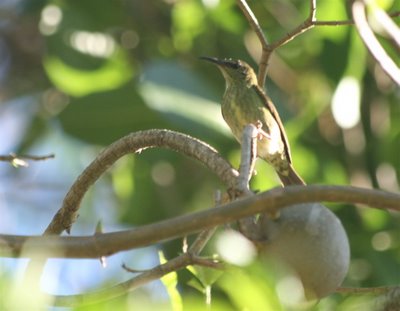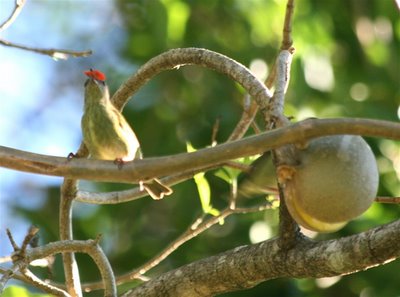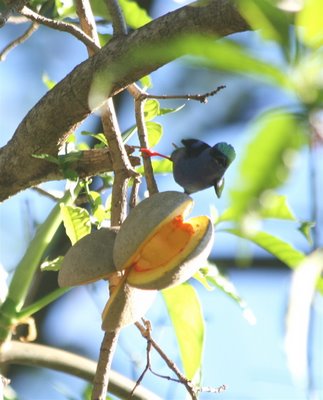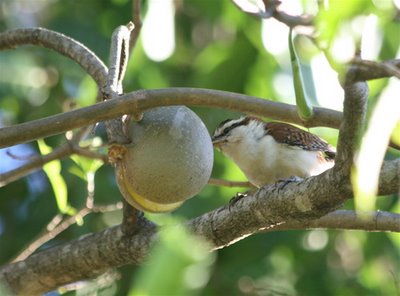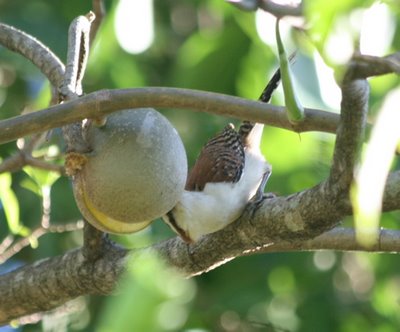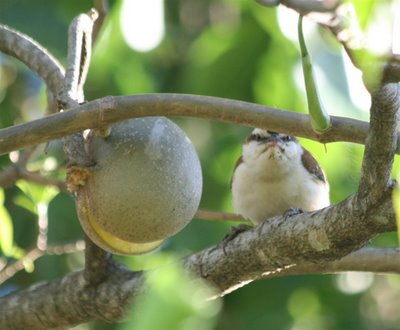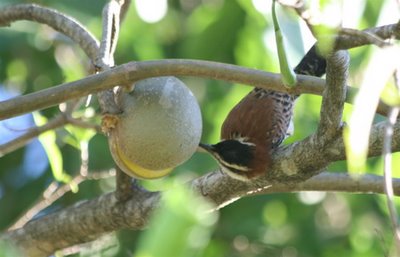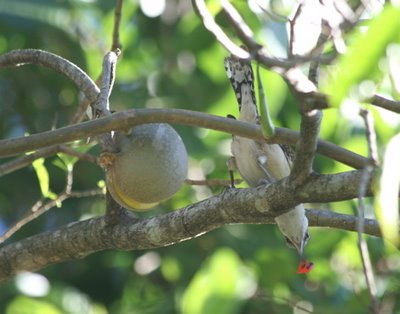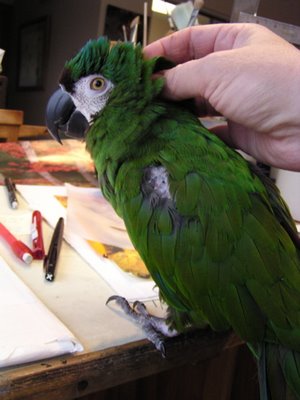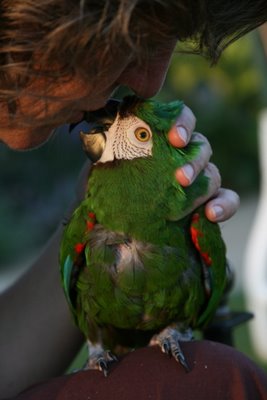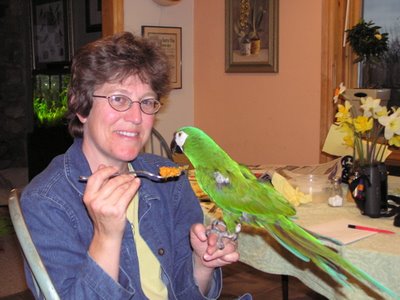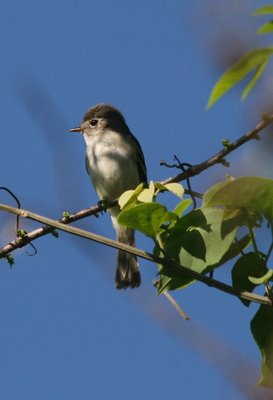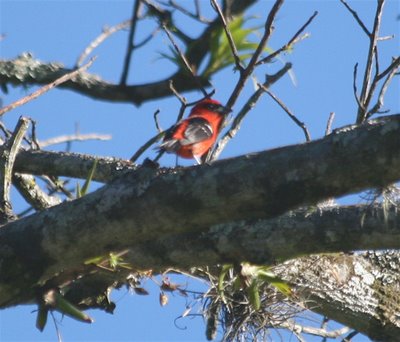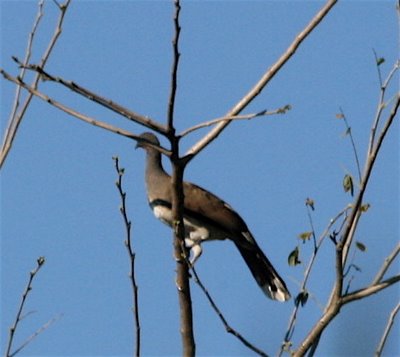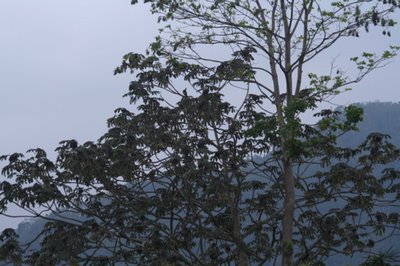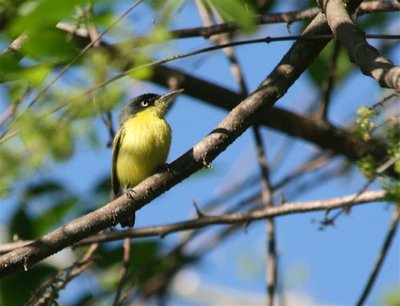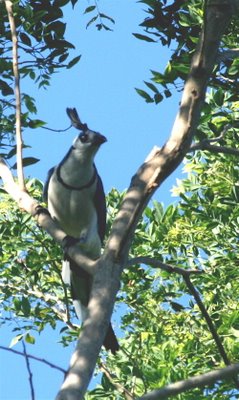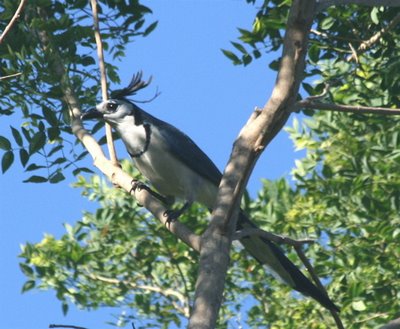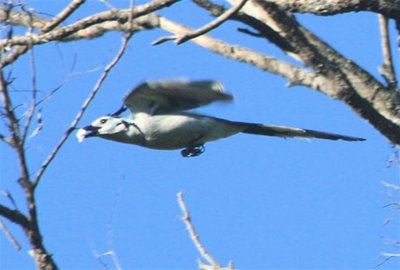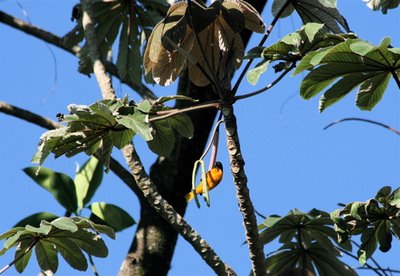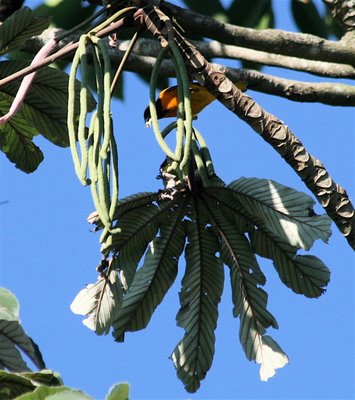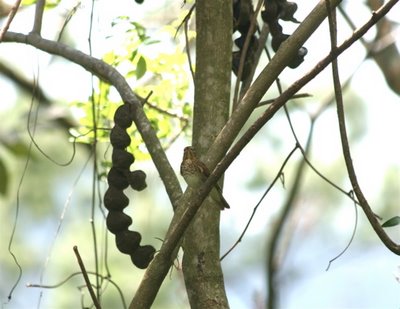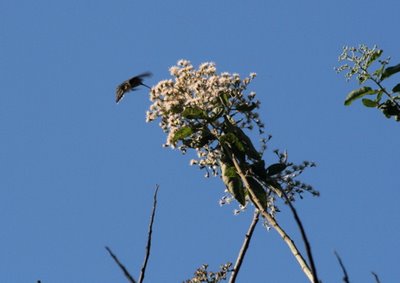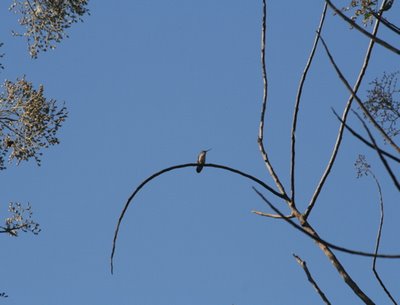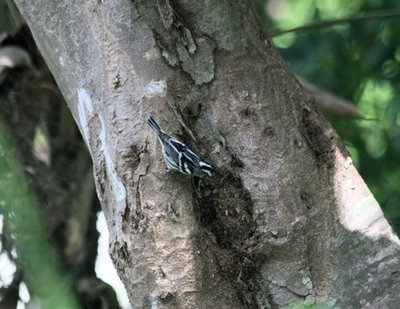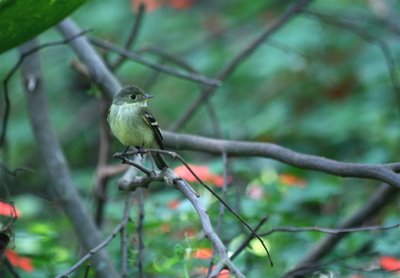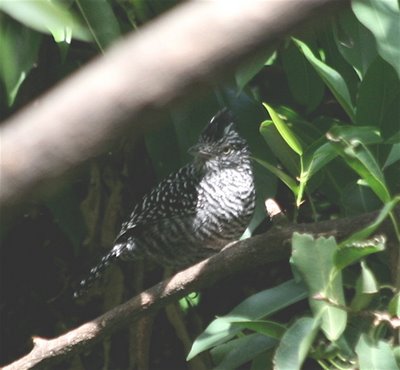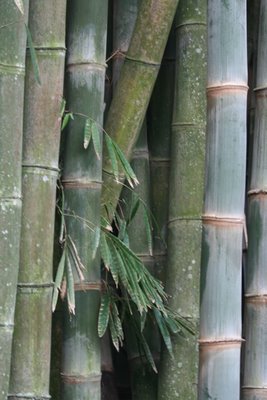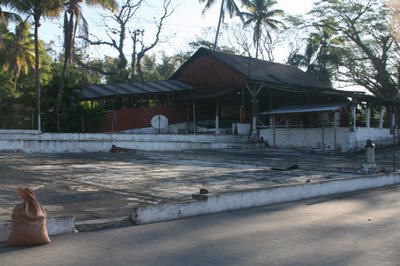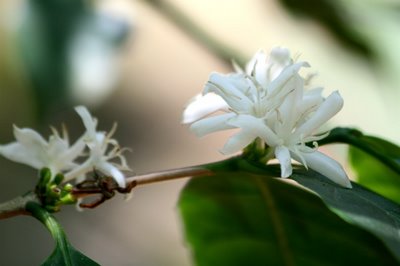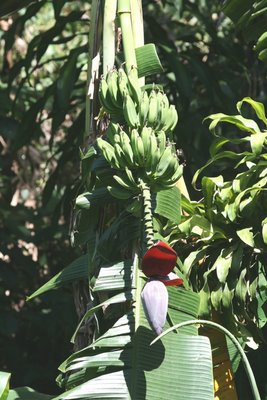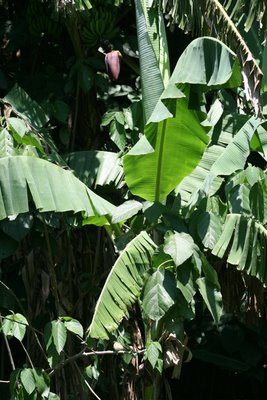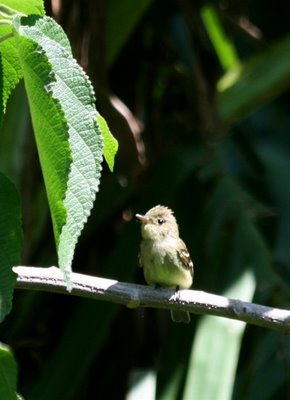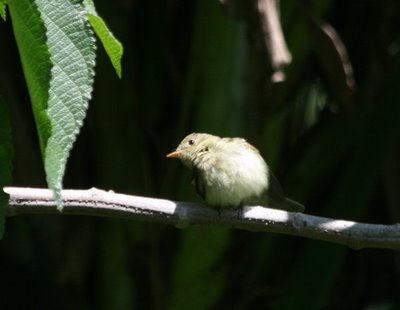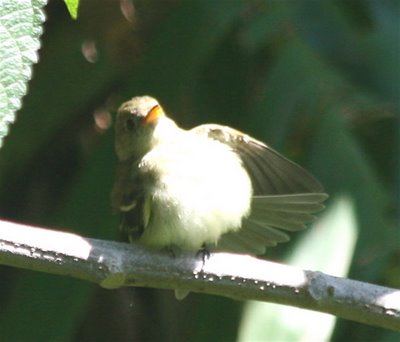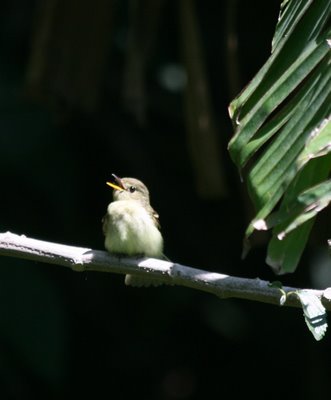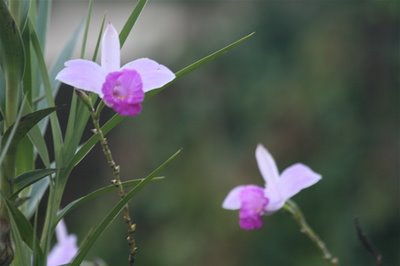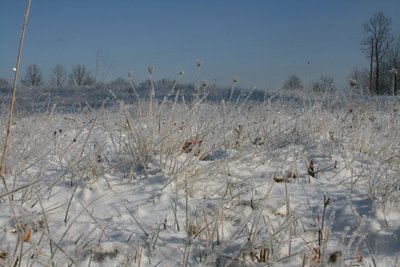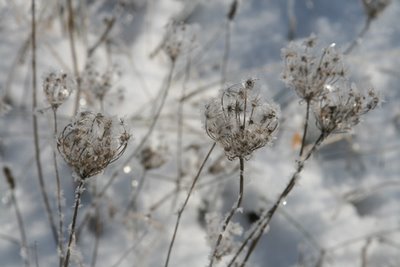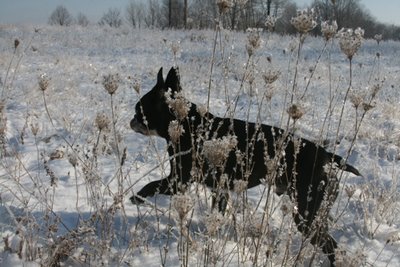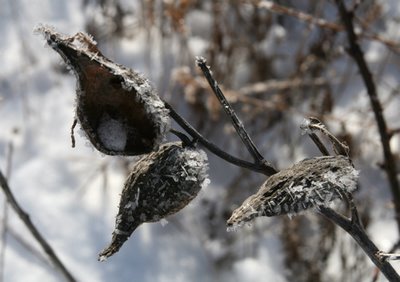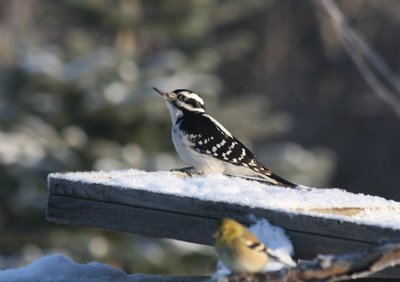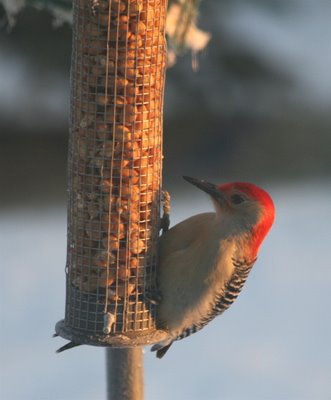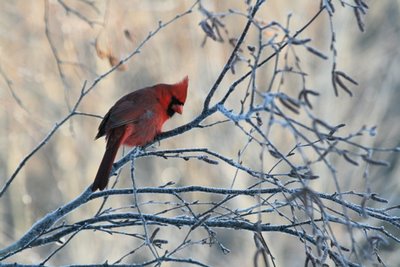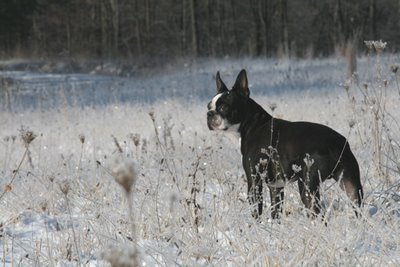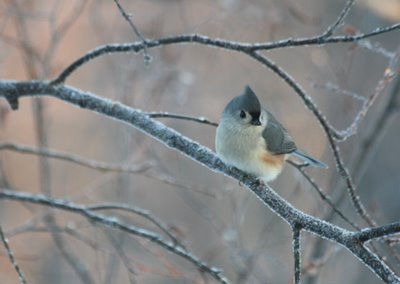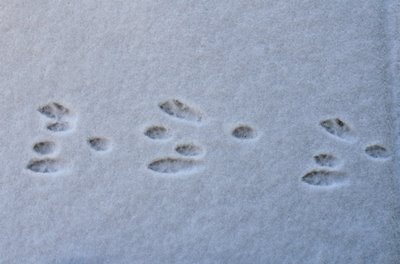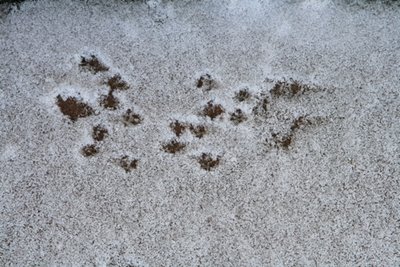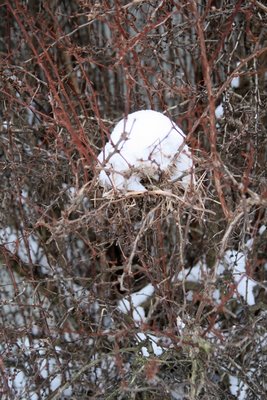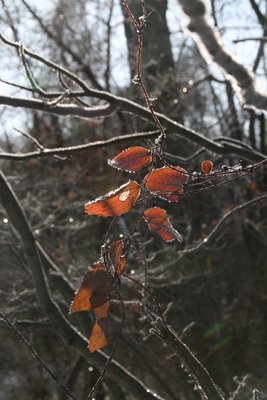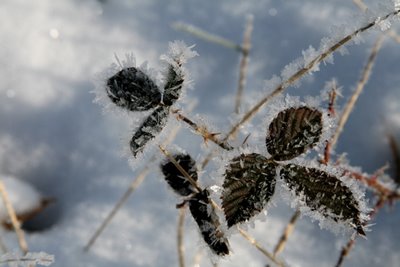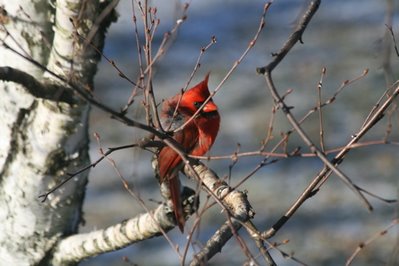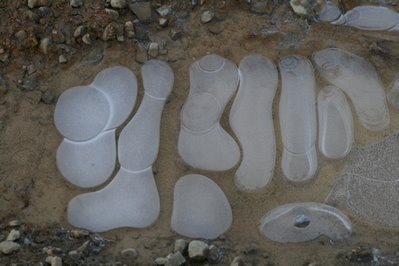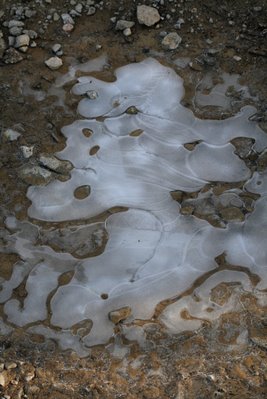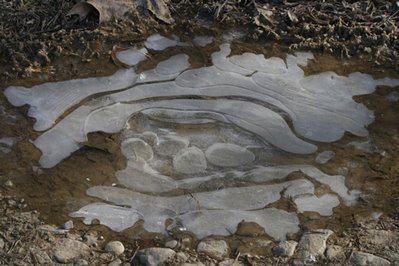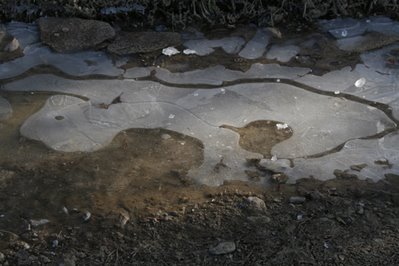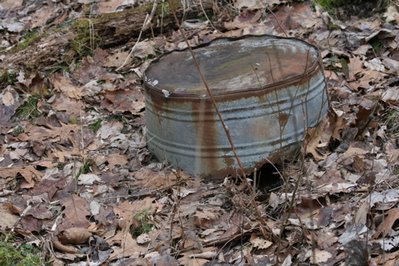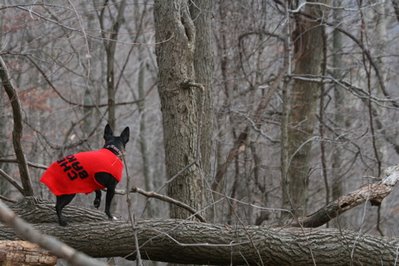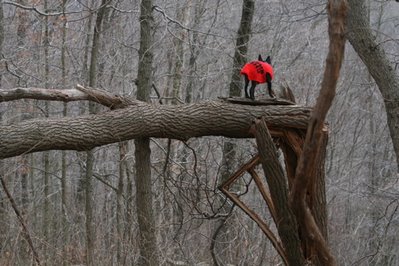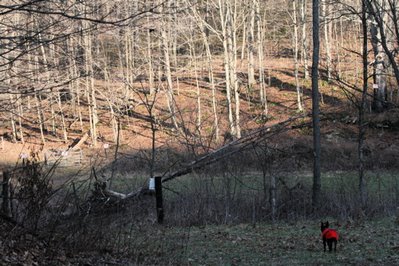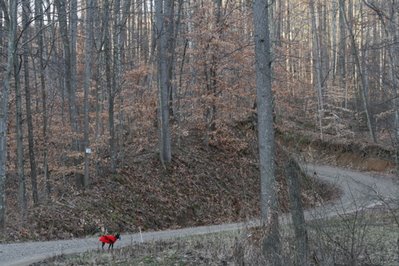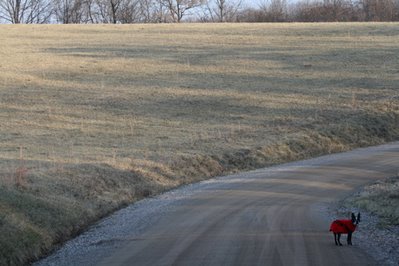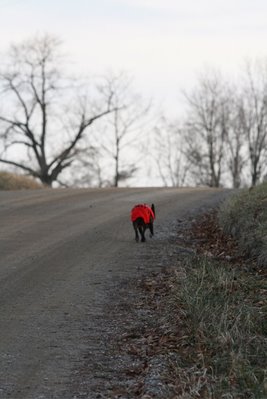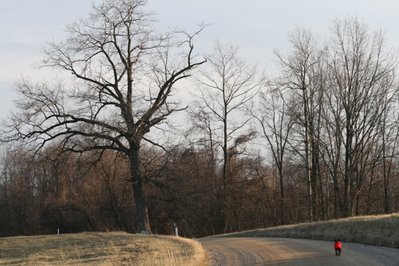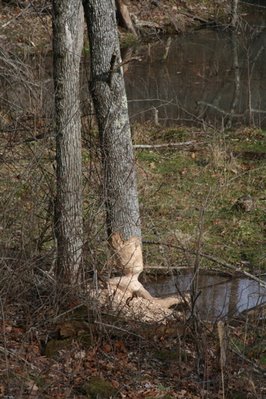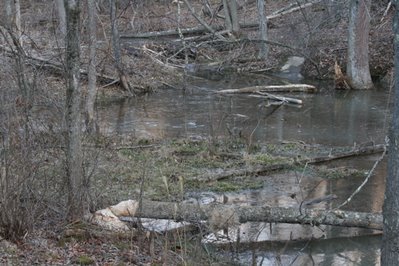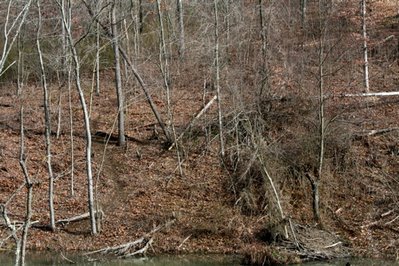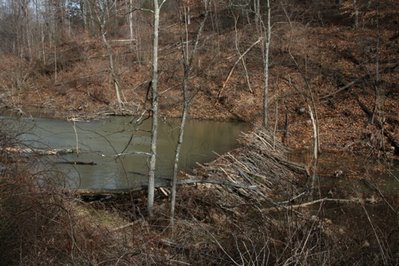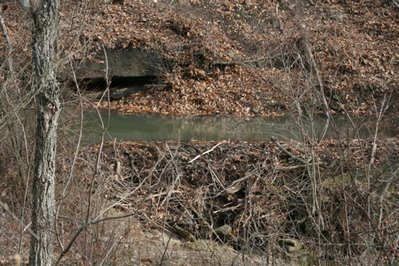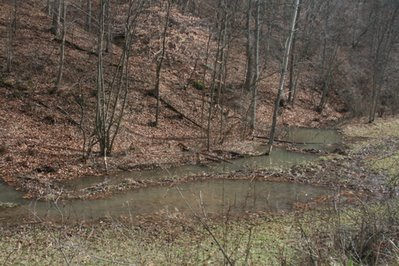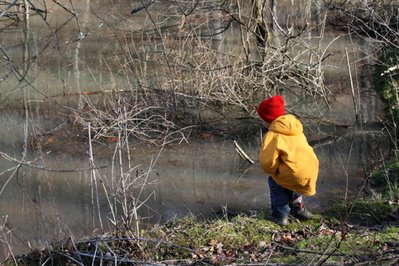Doodling Around Flores
Lake PetenItza is a prominent feature of the Peten region of Guatemala. It's gorgeous and blue, with a calcareous bed that shines white where it's shallow. On Bill's birthday, we had lunch at a nice lakeside restaurant/hotel, and he celebrated with a swim in the lake. One of the things I love about him is that he lives life in a large way. That's him on the right, and Liz Gordon, who lives similarly, on the left. I would be the one on dry land, taking a picture of people who live large.
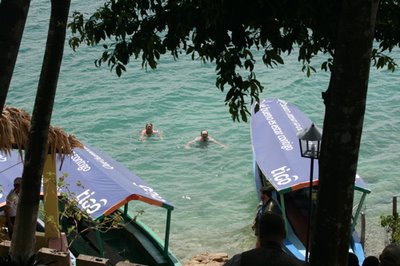 At this point, I was feeling a bit odd, and the thought of crossing the lake in the covered dugouts didn't appeal to me; I'd been losing a battle with what I took to be carsickness all morning. So I opted to go back around the lake in the bus rather than cross it with the rest of the (more intrepid) group. If I can ride in the front, I'm fine. Every time I get in the back of a bus, trouble ensues. The bus driver agreed to drop me off in Flores, where I could wait for them to land in their tippy ol' pirogues.
At this point, I was feeling a bit odd, and the thought of crossing the lake in the covered dugouts didn't appeal to me; I'd been losing a battle with what I took to be carsickness all morning. So I opted to go back around the lake in the bus rather than cross it with the rest of the (more intrepid) group. If I can ride in the front, I'm fine. Every time I get in the back of a bus, trouble ensues. The bus driver agreed to drop me off in Flores, where I could wait for them to land in their tippy ol' pirogues.It's a good thing I didn't know I'd be giving up awesome looks at Bill's birthday bat falcon by taking the bus.
Fact is, when I'm alone with my camera anywhere, I'm bound to have fun, and being in Guatemala just made it more special. I shot typical tourist pictures out of the bus windshield. I always get a chuckle out of the word "ferreteria;" it conjures up some kind of crazy weasel factory in my mind.
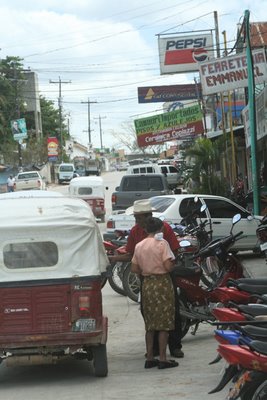 It means "Ironworks," in fact, and there are ferreterias in every little town, because everybody has wrought iron guards over windows and doors to prevent theft, all over Latin America. We just don't get how lucky we are in the U.S., not to have to put grilles over all our windows and doors, not to even think about that.
It means "Ironworks," in fact, and there are ferreterias in every little town, because everybody has wrought iron guards over windows and doors to prevent theft, all over Latin America. We just don't get how lucky we are in the U.S., not to have to put grilles over all our windows and doors, not to even think about that.A nice view of PetenItza, bougainvilleas in the foreground. Hey, I have those blooming in my greenhouse, with SNOW pelting on the roof, right here in Ohio! Lucky me!
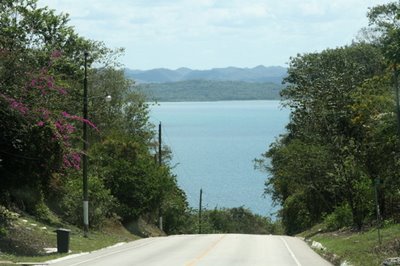
When I think of Guatemala, I think of color, color, color. That's why it's such an anodyne to this endless stinkin' winter of snow, rain, sleet and snain. We arrived in Flores, and I soaked up some color.
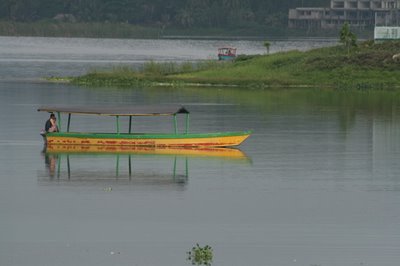
Working on the theme of green and yellow, this tropical kingbird set off a wild balustrade. Try painting your house those colors in Shelter Island, New York. But it works beautifully with the heat and light down in Guatemala.
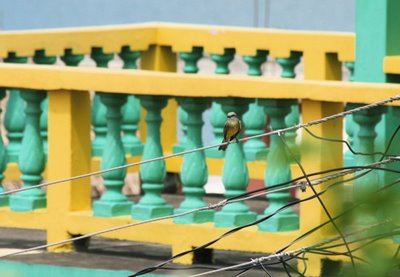
More turquoise. I walked down steamy-hot alleys, clicking all the way. Just to be in hot sun...such a foreign feeling. To feel my vitamin D cycle re-activate.
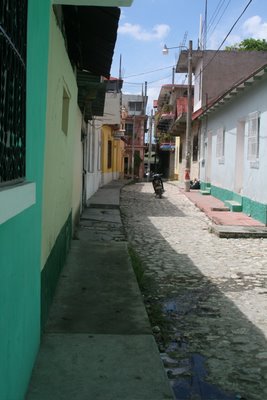
Finally, I climbed to the highest point in Flores, which is a little town on an island. I looked out over the harbor, at a cluster of dwellings, and marveled at how much birds add to a scene.
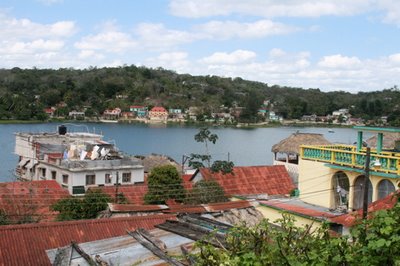
A white rock pigeon looked out over flapping sheets and towels. Roosters crowed, and I wondered how anybody sleeps in Guatemala. I guess after awhile you don't hear 'em.
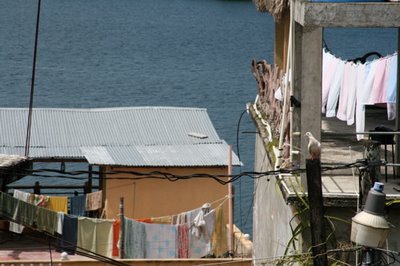
A great-tailed grackle preened and displayed, cosseted by powerlines. Common as dirt, they are absolutely gorgeous birds, loud and crackly, squeaky and iridescent.
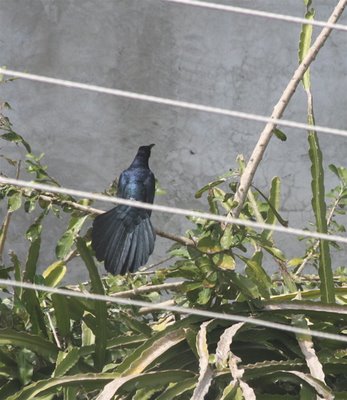
I had seen a rufous-tailed hummingbird flitting around a flowering vine at the overlook where I sat, the subject of curious conversation from a bunch of schoolboys in uniform on the plaza. Yes, I'm large and pale, and I have all kinds of optics dangling off me, and I stick out like a sore thumb, a gringa alone in a white-hot plaza, but there is a lovely hummingbird here, and I mean to stay and wait until I get a picture of it.
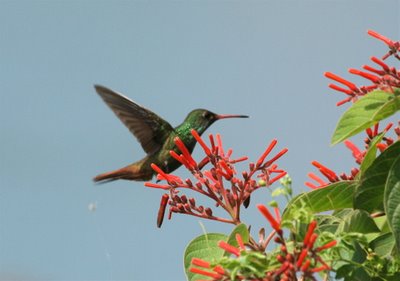
There was something dangling from its tail, and I realized upon zooming in that it was nesting material. So this is a female rufous-tailed hummingbird, filling her crop in a break in incubation or nest building. Nice to know.
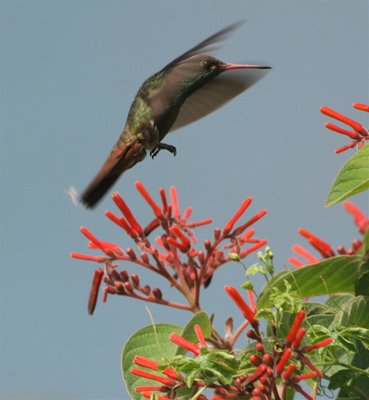 I see much the same thing when female rubythroats come to the feeder in early spring; many of them have nesting material stuck to their feet, and they leave puffs of plant down from their bills on the feeder ports. That's when I know they're nestbuilding. And to think it'll be happening here in grotty, gray old Ohio in about three weeks...it almost defies belief. Well, there were three tree swallows jingling over the meadow this morning, which lifted my heart immeasurably. But it's got a long way to go to be springy. And my friend Cindy is buried in snow again in New Hampshire. I can hear all of New England crying, "UNCLE!!"
I see much the same thing when female rubythroats come to the feeder in early spring; many of them have nesting material stuck to their feet, and they leave puffs of plant down from their bills on the feeder ports. That's when I know they're nestbuilding. And to think it'll be happening here in grotty, gray old Ohio in about three weeks...it almost defies belief. Well, there were three tree swallows jingling over the meadow this morning, which lifted my heart immeasurably. But it's got a long way to go to be springy. And my friend Cindy is buried in snow again in New Hampshire. I can hear all of New England crying, "UNCLE!!"I waited and waited for the hummingbird to return, keeping my camera lifted and focused on the best bunch of flowers, with the blue harbor as a backdrop. And finally she came in and I was ready and got The Shot, probably my best picture of the trip.
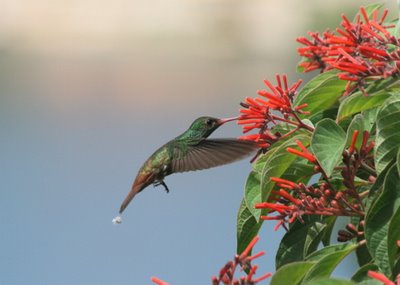
Thank you, Patience. Thank you, Photography Gods. Thank you, Flores, and thank you, Mrs. Hummingbird.
Later that evening, we threw an impromptu birthday party (complete with cake! Thank you, Ana Cristina Prem!!) for Bill. His friends stood up and offered testimonials. I had envisioned it as sort of a roast, but they all said really sweet things instead. Bawww! He blew out the candles, and everyone sang and cheered, for he is a jolly good fellow, and best of all he was in Guatemala at last. I can't tell you how much more complete it all was with Bill's spirit of fellowship and fun there.

photo by Lisa White.
Why, is that a Gallo in the foreground? I believe it is. Denise is smiling. Steve Howell, co-author with Sophie Webb of Birds of Mexico and Northern Central America, is looking over Bill's left shoulder, peerless Guatemalan bird guide Hugo Haroldo Enriquez Toledo over his right--naughty angel and good!
Labels: Bill's birthday, ecotourism in Guatemala, ferreterias, Flores, great-tailed grackle, Guatemala, Lake PetenItza, rufous-tailed hummingbird

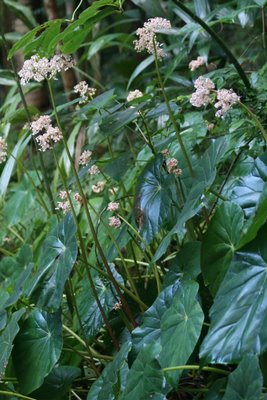
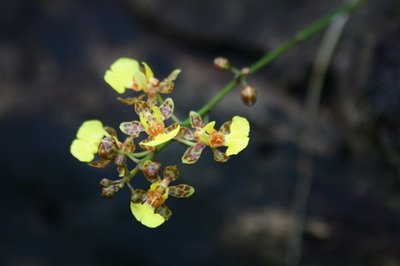
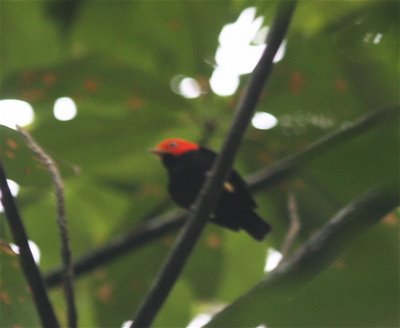
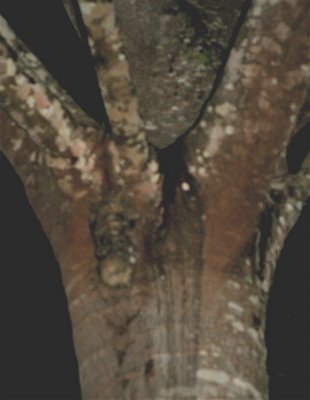
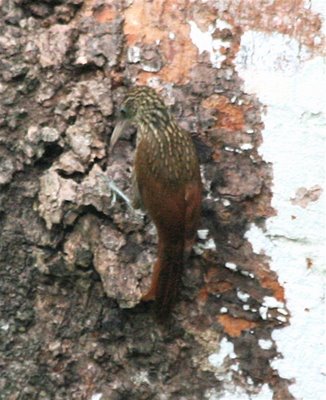
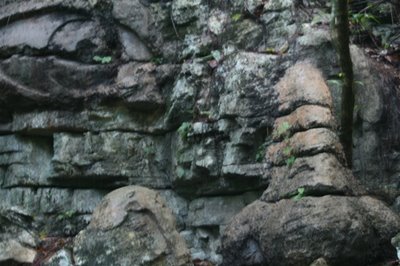
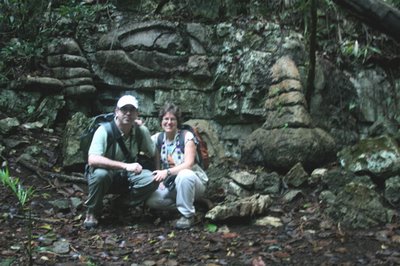


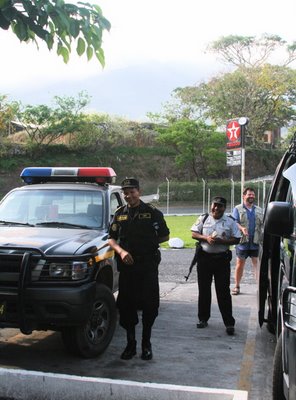
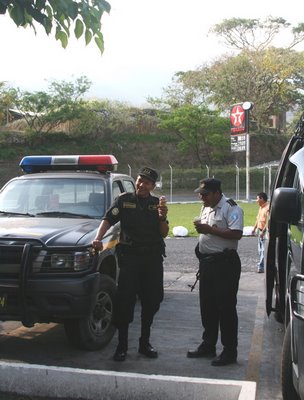
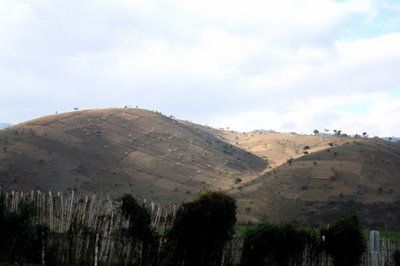

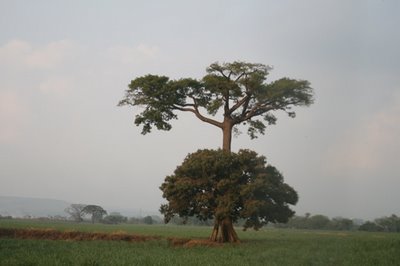

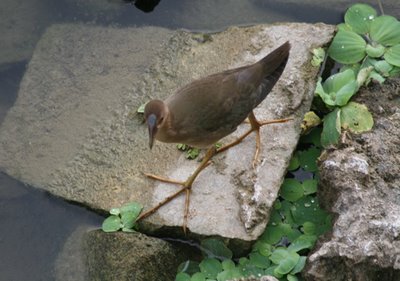
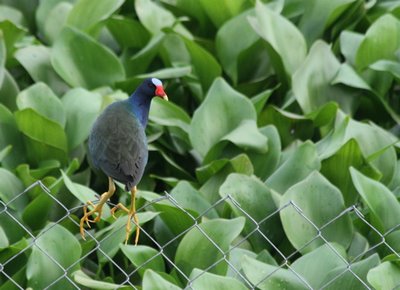
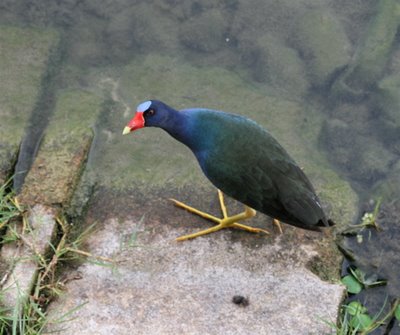
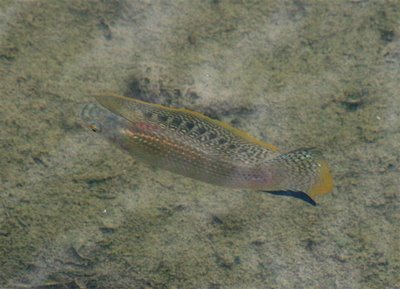
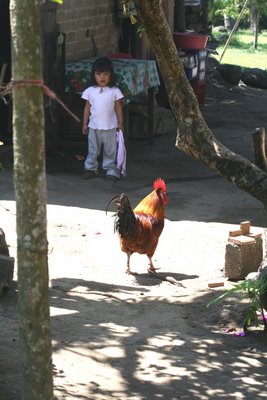
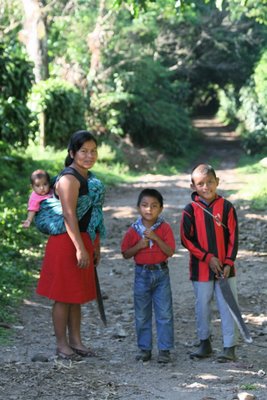
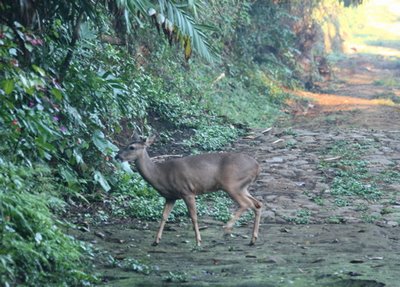
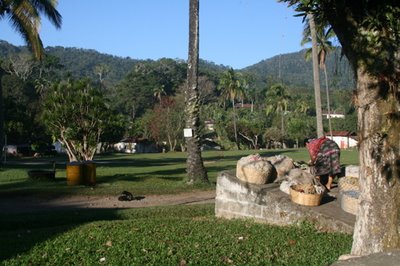
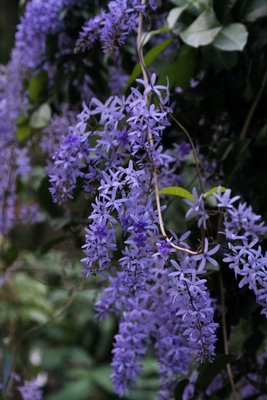
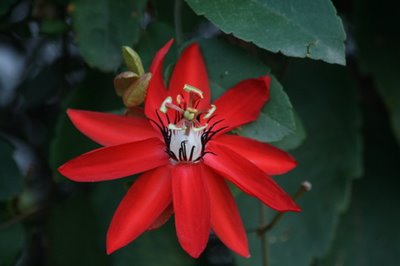
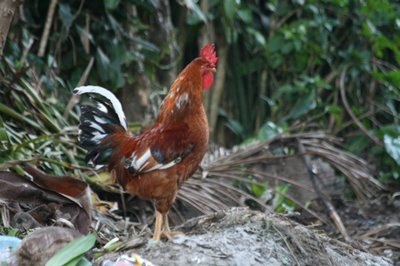
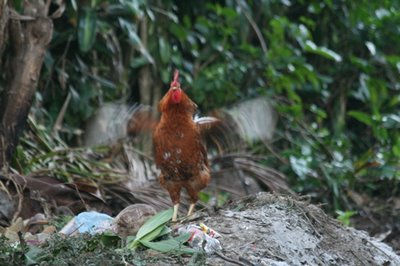
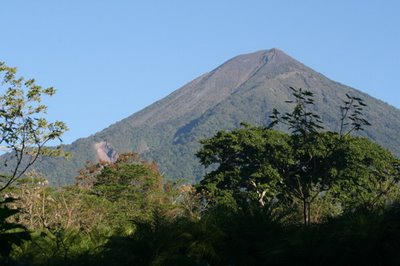

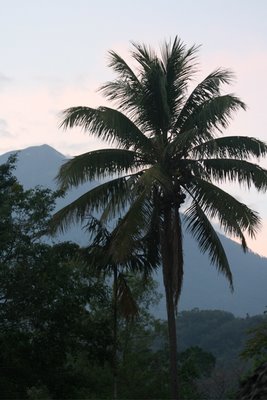
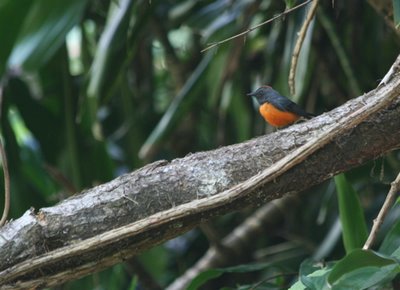
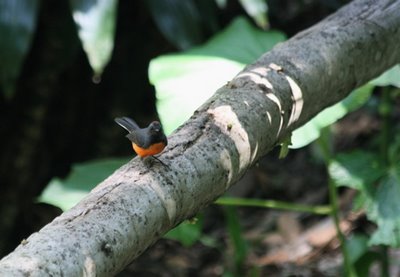
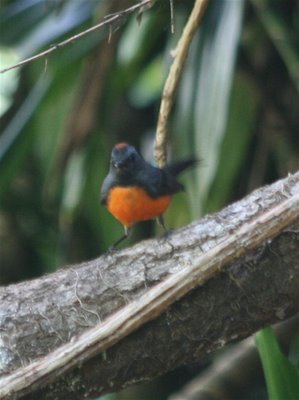
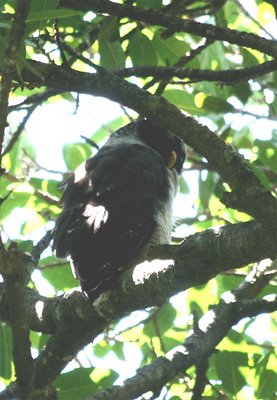

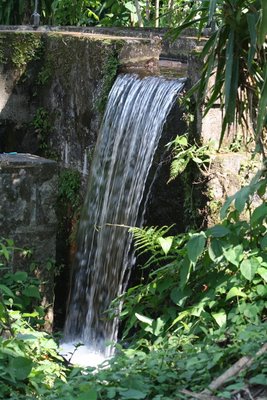
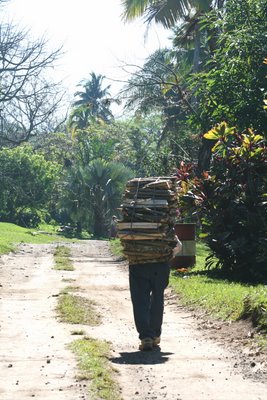
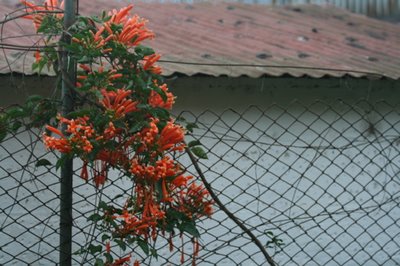
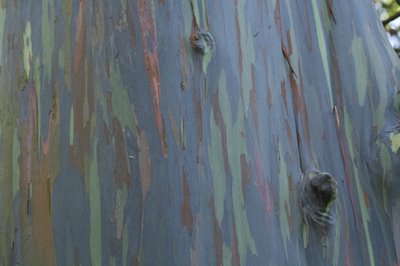
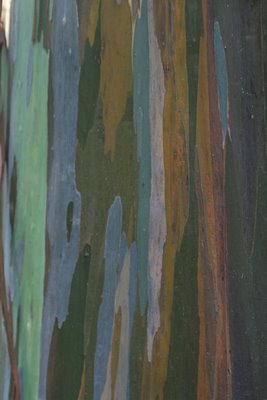
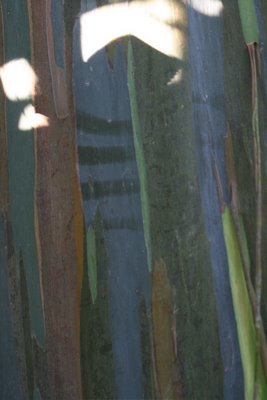
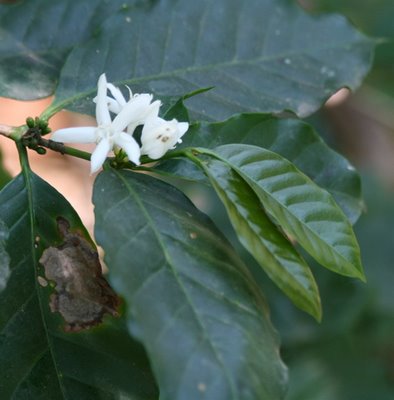
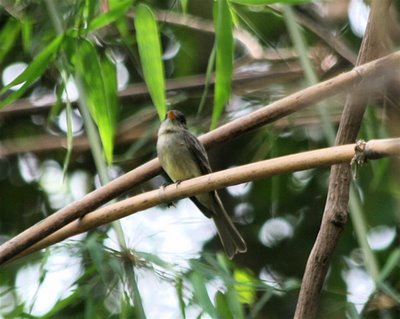
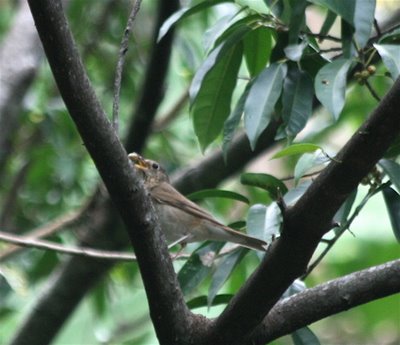
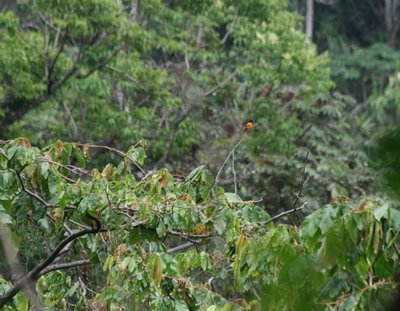
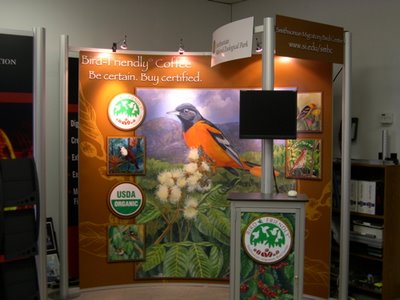
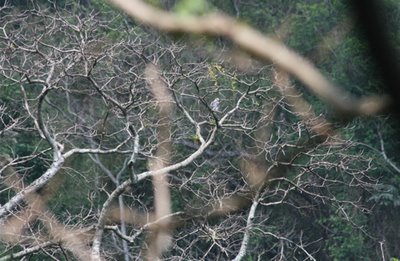
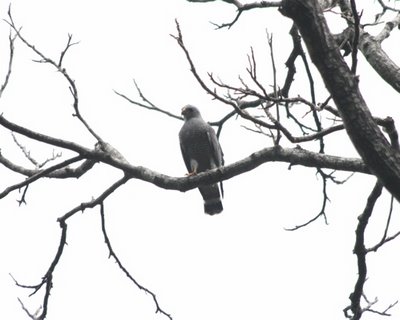
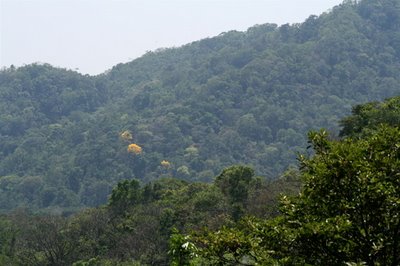
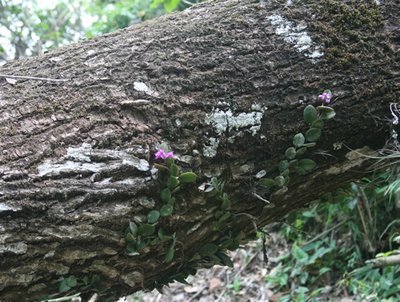
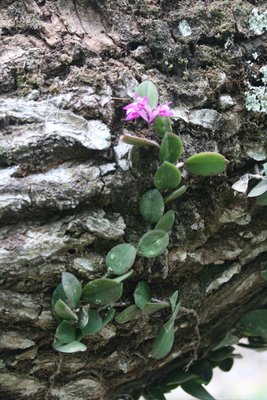
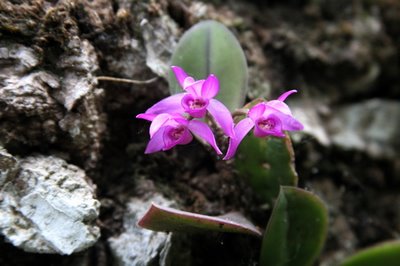
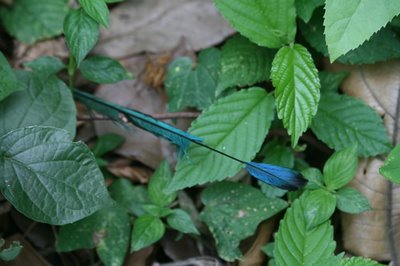
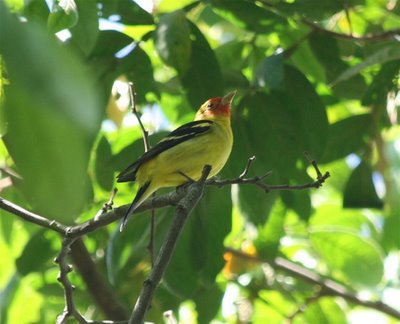

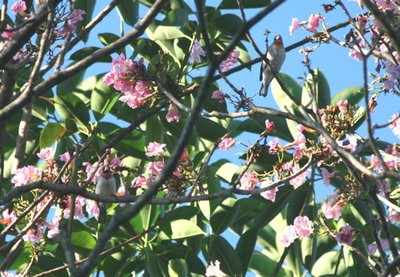
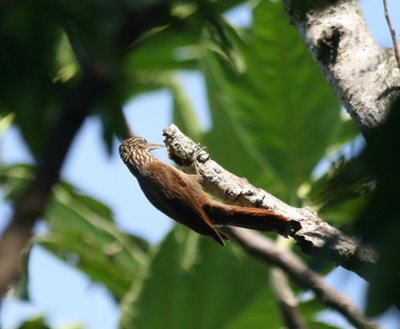
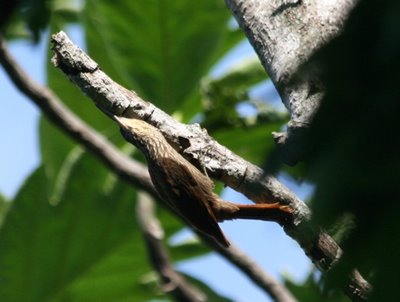
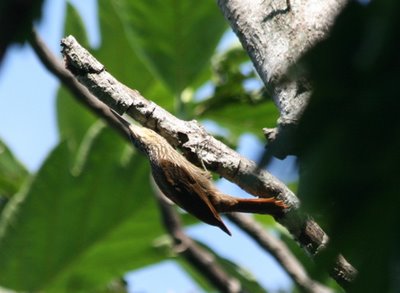
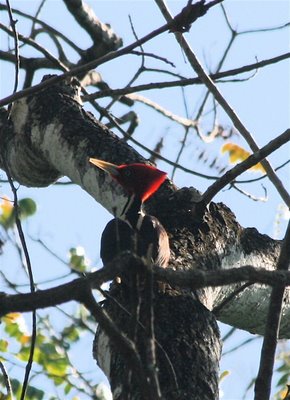
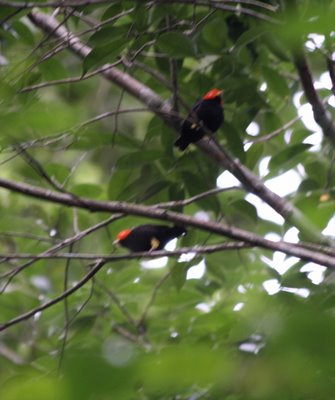
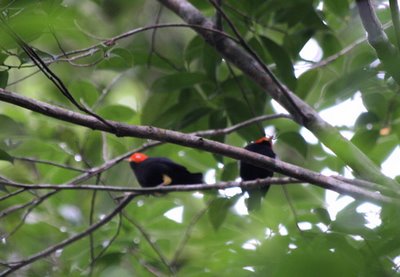
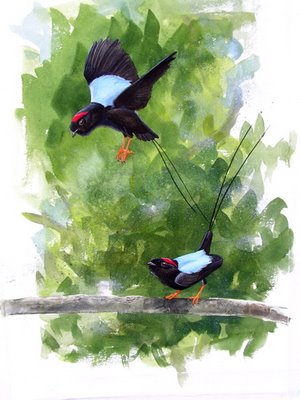
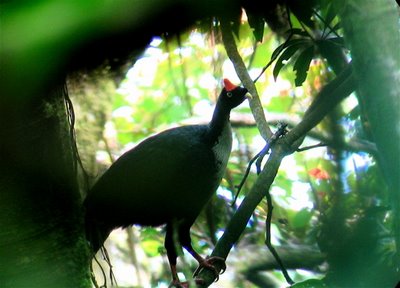
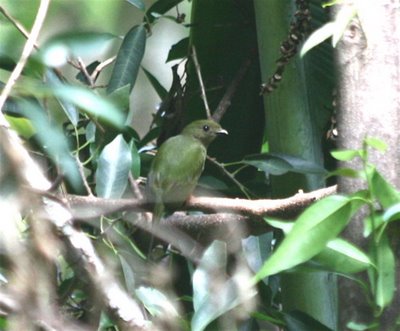
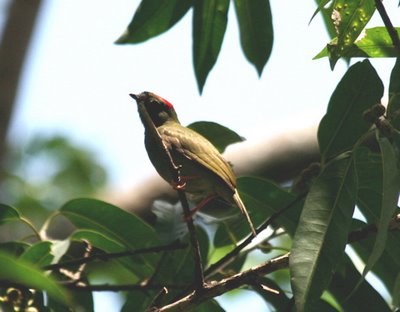
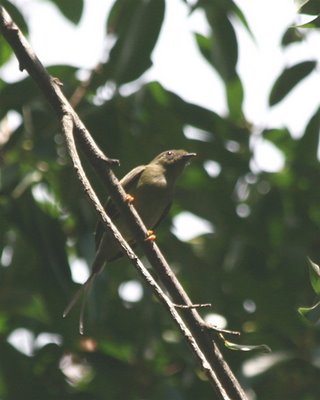
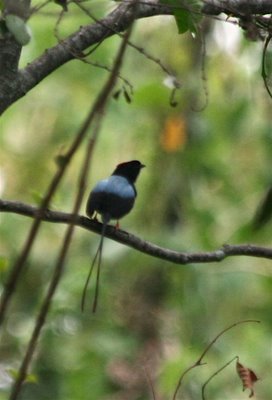
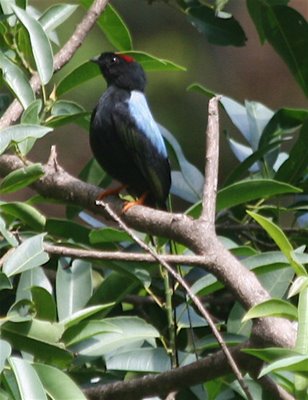
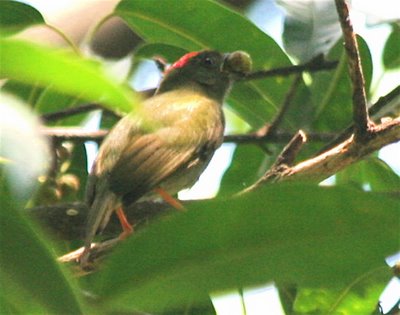
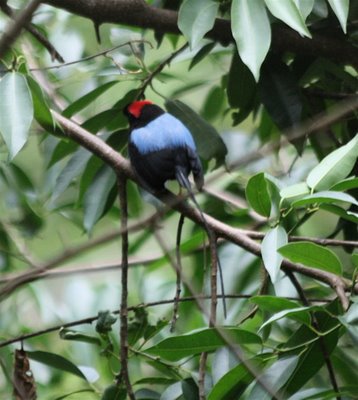
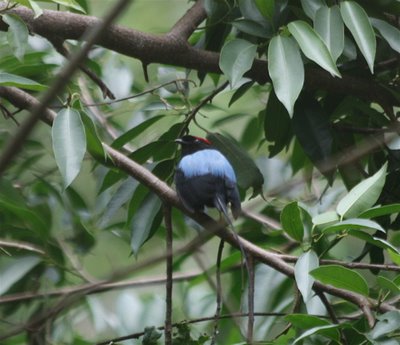
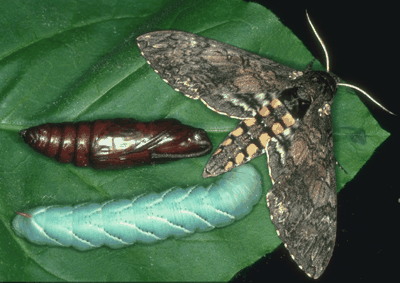

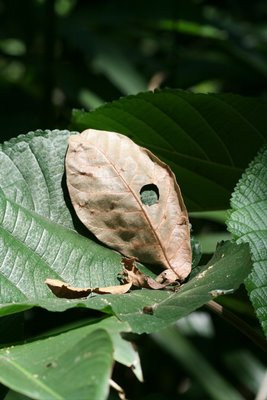
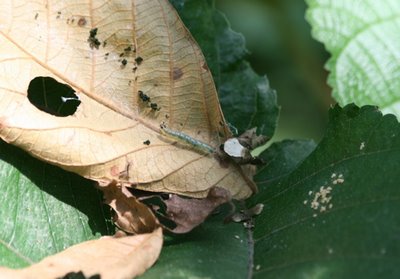
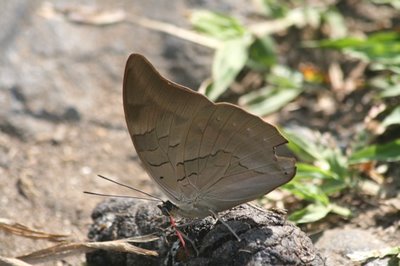
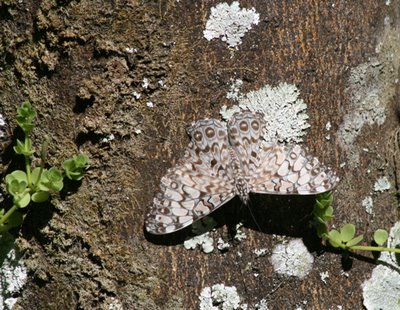
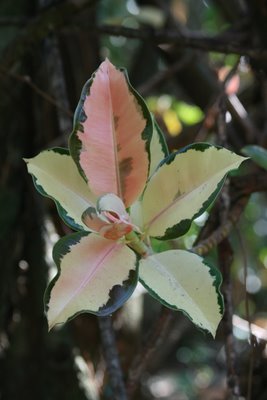
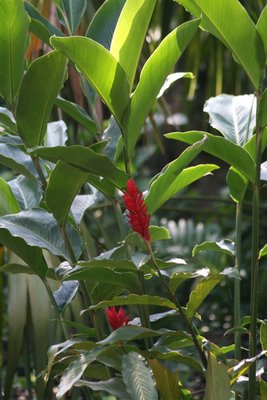
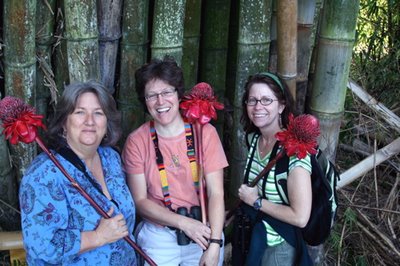
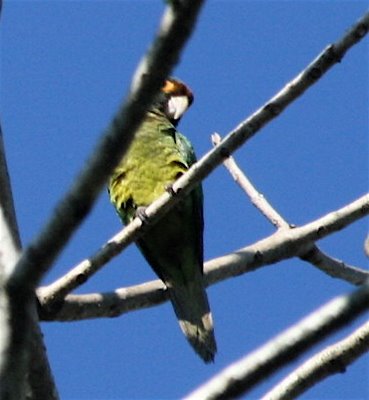
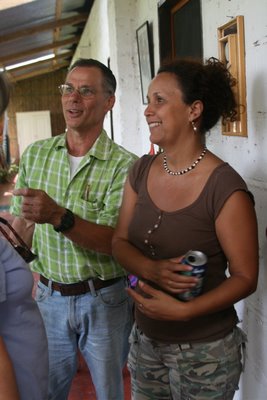
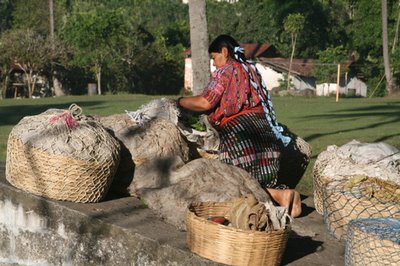

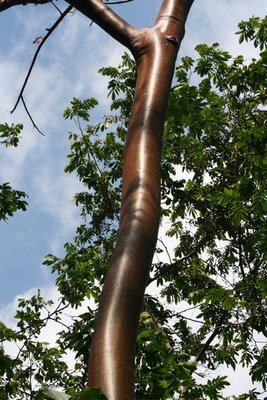

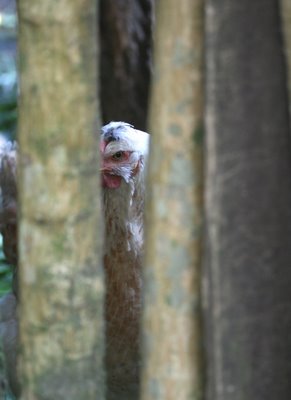
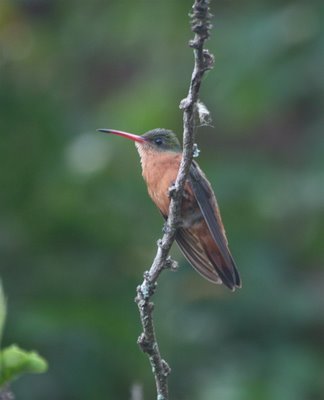
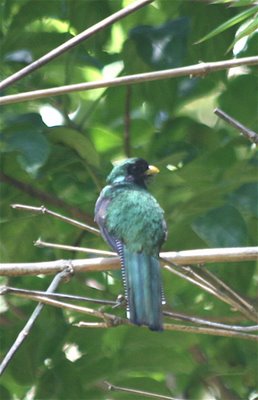
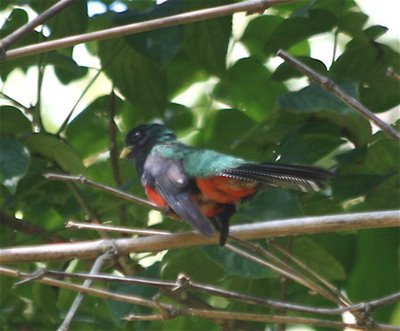

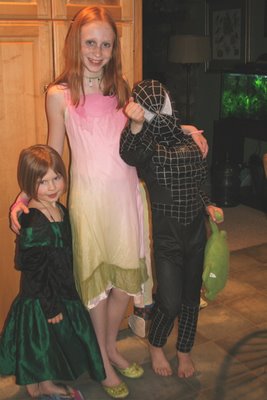
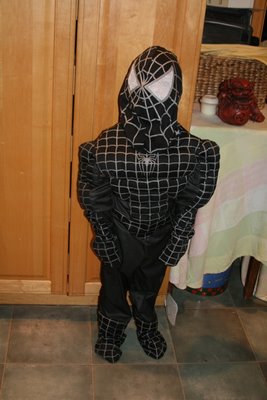


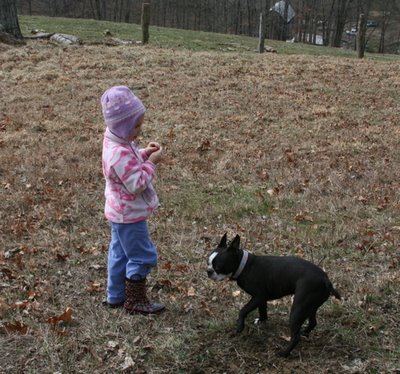
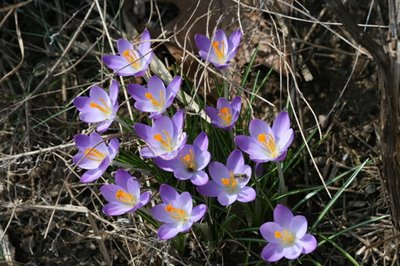

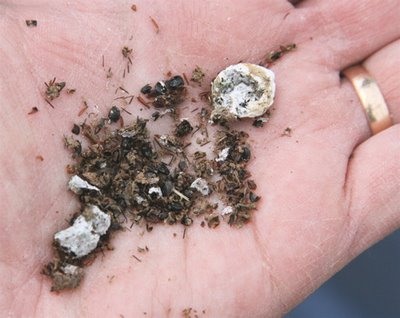
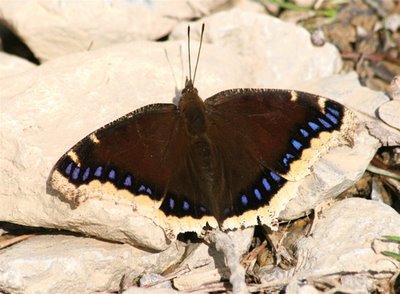
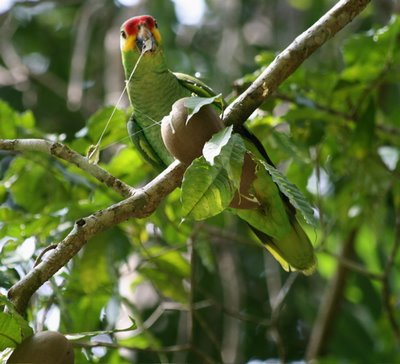 Huevos del Toro, if you're refined, and bull's balls if, like me, you're not. Named for the way it hangs in pairs, they're one of my favorite Guatemalan fruits, even though I've never, um, eaten them. They're hugely popular with birds. Last year at Tikal, I took some delightful pictures of a wild red-lored Amazon parrot making his sticky way through an unripe fruit, intent on seed piracy. Naughty parrot, you're going around the plant's divine plan for its own dispersal, tearing through unripe flesh to eat its seeds, and you're getting all gummy, too. Yes, parrot fans, this is how parrots should live--free to be themselves in all their irascible, sociable, messy glory. And yes, I tear up whenever I see them living, foraging, quarreling and flying as they were meant to.
Huevos del Toro, if you're refined, and bull's balls if, like me, you're not. Named for the way it hangs in pairs, they're one of my favorite Guatemalan fruits, even though I've never, um, eaten them. They're hugely popular with birds. Last year at Tikal, I took some delightful pictures of a wild red-lored Amazon parrot making his sticky way through an unripe fruit, intent on seed piracy. Naughty parrot, you're going around the plant's divine plan for its own dispersal, tearing through unripe flesh to eat its seeds, and you're getting all gummy, too. Yes, parrot fans, this is how parrots should live--free to be themselves in all their irascible, sociable, messy glory. And yes, I tear up whenever I see them living, foraging, quarreling and flying as they were meant to. 